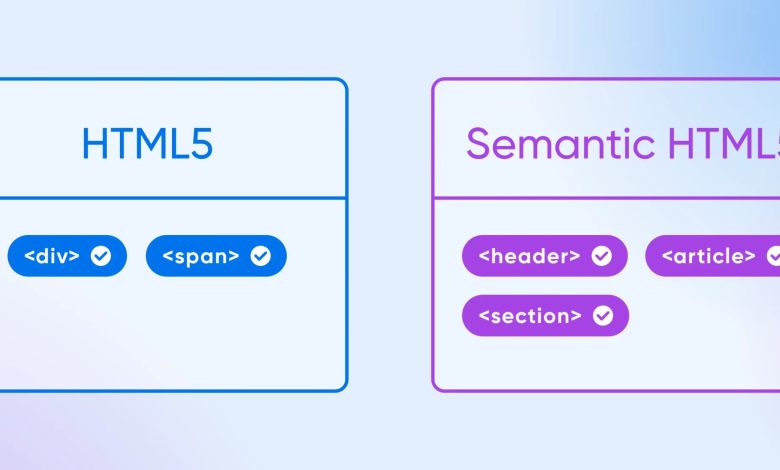The Importance of Semantic HTML in Web Development

HTML is the foundation of every website. But writing semantic HTML—that is, using elements that describe their meaning—goes far beyond simply making a page work. Semantic HTML improves accessibility, SEO, maintainability, and collaboration.
In this article, we’ll explore what semantic HTML is, why it’s important, and how developers can use it effectively in modern web development.
1. What Is Semantic HTML?
Semantic HTML refers to using HTML elements that have meaning both for developers and machines (like browsers and search engines).
Examples of semantic tags:
<header>→ Defines page or section header.<main>→ Indicates the main content of the page.<article>→ Represents self-contained content.<section>→ Groups related content.<footer>→ Defines page or section footer.
By contrast, non-semantic tags like <div> or <span> don’t provide any meaning by themselves.
2. Why Semantic HTML Matters
Semantic HTML has several advantages:
- Accessibility: Screen readers can better understand the structure.
- SEO Benefits: Search engines prioritize properly structured content.
- Maintainability: Easier for developers to read and understand the code.
- Consistency: Provides a logical content hierarchy.
3. Accessibility Benefits
For visually impaired users, semantic tags provide context. For example, <nav> tells assistive technologies that a section contains navigation links.
✅ Example:
This is more meaningful than wrapping links in a generic <div>.
4. SEO Benefits
Search engines rely heavily on semantic structure. For instance:
<h1>should represent the main title of the page.<h2>,<h3>define subsections.<article>signals a complete piece of content like a blog post.
Proper use of these elements increases ranking opportunities.
5. Better Code Readability and Maintenance
Compare the two snippets:
❌ Non-semantic:
✅ Semantic:
The second example is instantly more understandable.
6. Examples of Common Semantic Elements
- Structural:
<header>,<main>,<footer>,<section>. - Content-related:
<article>,<figure>,<figcaption>. - Text-related:
<strong>,<em>,<blockquote>,<abbr>.
✅ Example:
7. Semantic HTML in Forms
Forms are essential for user interaction. Using labels and semantic attributes makes them accessible.
✅ Example:
Screen readers can announce the label correctly, improving usability.
8. Common Mistakes Developers Make
- Overusing
<div>instead of semantic tags. - Incorrect heading hierarchy (e.g., jumping from
<h1>to<h4>). - Using
<b>or<i>for emphasis instead of<strong>or<em>.
9. Semantic HTML and ARIA Roles
When semantic tags are unavailable, ARIA roles can provide extra meaning. Example:
But whenever possible, prefer <nav> instead of adding role="navigation".
10. Semantic HTML in the Modern Web
With frameworks like React, Vue, and Angular, developers sometimes neglect semantic structure. However, even in component-driven design, semantic tags are crucial for accessibility and SEO.
For example:
Conclusion
Semantic HTML is more than a coding style—it’s about building a web that’s accessible, understandable, and optimized. By using meaningful elements, developers create websites that:
- Work better with assistive technologies.
- Rank higher on search engines.
- Are easier to maintain and scale.
If you want to write clean, professional, and future-proof code, adopting semantic HTML should be at the core of your development practice.

